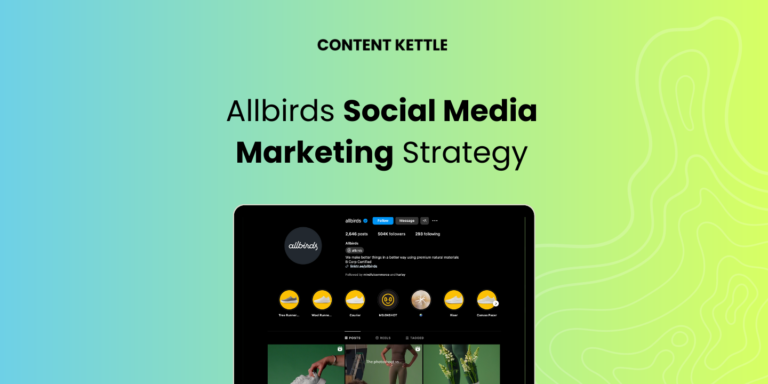Online store owners and marketers are using multiple channels and campaigns to drive more traffic to their sites. However, converting these store visits to actual sales by capturing the customer intent is a whole new ballgame altogether.
As of 2019, the average global conversion rate for e-commerce stores is just a mere 2.58%. When you’re spending hundreds and thousands of dollars reaching out and targeting your ‘ideal’ customers with campaigns, you obviously want to see results.
A very big reason for this traffic to often not convert is the store’s inability to capture the intent of buyers. Especially on products that have run out of stock or are soon to be launched.
In this episode of Content Kettle, we have Rishabh Tayal and Hemant Purswani, the Co-founders and Appikon, who have been building smart apps to enable online stores to capture the purchase intent of buyers and then bring them back to the store without having to go through the entire cycle of reaching out to them and enticing them to visit the store by spending more!
If you’re soon launching a new product or collection, or are going to restock an item that you’ve seen a lot of interest in, this episode is for you.
About Appikon
Appikon is an e-commerce app development company. They are a team of Shopify experts that build apps to help e-commerce stores maintain and boost their sales.
To ensure customers stay in your store and not turn to your competitors is their prime goal. Rishabh and Hemant mention that the reason they started their company was to help merchants to not lose sales.
“We want to equip you with the best Shopify apps that keep your customers engaged, drive more sales and bring in more revenue!”, they say. Furthermore, they add that Appikon can help you “supercharge your Shopify store to get more sales and revenue! “
Ecommerce Marketing Strategies To Capture Customer Intent And Drive More Sales
Preorder Marketing
Letting your customers place orders for products/services that have not yet been released is the simple idea behind preorders. As e-commerce store owners, you can choose to either charge the consumer when the order is placed itself once the item is shipped/delivered.
The Appikon co-founders also point out how pre-ordering is not an industry-specific functionality. In fact, companies like Apple and Tesla use it as well!
View this post on Instagram
Why preorder?
- Capture the demand
This is a super helpful addition to your store when you want to capture the demand. This helps when you’re unsure of the demand even if you don’t have inventory. This prevents you from draining resources and then worrying over unsold stocks. - Helps reduce financial risks
It also helps when you do not have a lot of funds, to begin with. With pre-orders, you can first raise funds first then manufacture. This is especially useful for newer and smaller retailers who have to otherwise find alternate solutions to arrange for the money. - Creates a sense of ‘hype’
Combining the concept of limited-time stocks and the scarcity principle to your products are great persuasions to push the customer to make a purchase. However, ensure to keep the pre-order period no more than 2 months at most times, as anything beyond this could also lead to loss of interest.
Restock Updates
As a seller, you do not want to miss out on any opportunity of making a sale. Rishabh and Hemant stress to stop losing sales to stockouts. You need to re-engage with shoppers through back-in-stock alerts on email, SMS, Facebook Messenger and web push notifications and win that ‘lost’ sale back!
When asked about how many of the shoppers who subscribe to the restock updates actually come back, they promptly answer ”around 20%!” However, 20% is a lot better than 0%, they stress.
Email is still the most popular medium for this, they say. However, SMS is also catching up, along with Facebook Messenger and many others.
While this is a great way to increase sales, you should also ensure to not spam your customers as well – just send timely reminders. And remember, back-in-stock notifications are only for customers who were interested in the product and willingly opted in for updates so when sent in the right manner, it’s not really spamming. “And obviously if the customer thinks it’s spam-y they can always unsubscribe”, says Rishabh.
View this post on Instagram
You can check out their Back In Stock App here.
More tips for e-commerce store owners
- Run discounts, bulk discounts along with reduced or free shipping charges – these tremendously help increase average sale amount, they say.
- Do not ignore the power and importance of SEO. If your online store has no traffic, consider your online store useless.
- Be where your customers are. For instance, you could simply set up your store on Amazon and not worry a lot about traffic. Your targeted audience is already there!
- Always try to automate as much as you can. You need to reduce physical labor to the maximum to yield the best results.
- Try to be a delegator instead of doing everything yourself once you have the capacity
- Focus on your product and not on backend processing. To help ease this process, use the required services and apps. Don’t shy away from doing so.
- Talk to your customers. Customer feedback is very important. Sometimes something might be wrong on your site and you won’t realize it until your customers point it out. You can have simple additions made like having a chat widget on your website.
They say, “the ultimate goal is to enjoy the process. (Also), try to improve every day. Otherwise, you become irrelevant soon.”
Listen more about Rishabh’s and Hemant’s take on the importance of multi-channel, sales funnels, their two cents worth to budding companies and so much more in this episode here.
Content Kettle is our E-Commerce Special podcast. Starting an eCommerce business may have gotten easier. But taking your products to buyers is getting tougher by the day. In the age of rising competition and a digital-first take on consumer-brand relationships, what eCommerce marketing strategies really work? In this podcast, we talk to brand owners, marketers and eCommerce experts to help you reach ‘what works’, faster.



